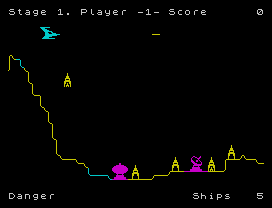Note: this post is expanded from one in my old blog, The Games of My Life.
In 1984, there was a little game for a little 48 KB machine which amazed everyone – nobody had done something like that with a computer (even a “bigger” one) before. You may have heard about it. I’ve even mentioned it here, some time ago: Mike Singleton’s The Lords of Midnight. ((I also used it as an obviously — and intentionally — unfair comparison with The Lord of the Rings Online with DirectX11.))
In the same year (!!!), Mike surpassed himself, with a game that was even larger, more complex, more detailed, more varied… and still used only 49152 bytes of RAM. It wasn’t very well named, though. The game was Doomdark’s Revenge.
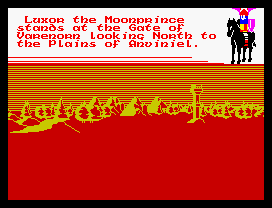
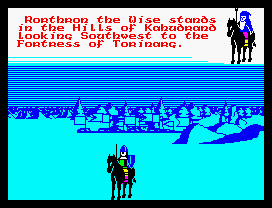
Why wasn’t that a good name? Because Doomdark, the villain from the first game, was, indeed, dead, after his defeat in LoM. Really dead, not “undead” or “sleeping until the stars are right”. The so-called “revenge” was to be by his daughter, Shareth the Heartstealer, from the land of Icemark (to the north of the land of Midnight), who was even more powerful and evil than his father (aren’t they always?), and who wanted Luxor the Moonprince to pay… because she had wanted the pleasure of killing her father for herself. Yes, you read that right. Surely a biting commentary on the nature of father-daughter relationships. To that end, she kidnapped Morkin, son of Luxor the Moonprince, the main character, took him to Icemark, and Luxor, an army of a thousand riders, and a couple of friends travelled between lands in order to rescue Morkin and bring an end to the threat of Doomdark’s family once and for all. (This story was told in detail in the excellent novella that accompanied the game.)
But the game was amazing. Instead of the “us versus them” of LoM, this game had several different races, with hierarchies of command (lieges and vassals, and their vassals, and so on), who moved around by themselves, waged war, and all that was mostly unpredictable. Every lord had characteristics, like being good, or evil, or reckless, or brave, or cowardly, or slow, or treacherous, and so on. The villainess, Shareth, also had her own goals, recruiting lords and their armies to her cause.
How unpredictable was the game? So much that, sometimes, Shareth herself was killed in battle, far away from you. (no, that didn’t end the game – you also had to rescue Morkin, and return to Midnight, remember?)
A far cry from today’s largely scripted games, isn’t it? And, unfortunaly, an idea that was never seen again, as far as I know. The villain is either stopped by the hero, or isn’t stopped at all. I know it makes things more epic, but… Doomdark’s Revenge, with its unpredictability, made me feel that, while I could affect the world, it didn’t revolve around me. (The other extreme of that equation, by the way, is a typical MMORPG – where, sure, the world doesn’t revolve around you, but you also can’t affect it in any lasting way, because the world is more like a “playground”, and it must remain mostly the same for other players. “Look, but don’t touch.” ((since I wrote that part in 2005, there have been some advances in MMORPGs in that respect, one of them being the idea of “phasing” parts of the world, so that, say, if a town is destroyed during a quest’s storyline, it stays destroyed for players who have already gone through that quest; those who didn’t, see it as intact. What happens is that the game actually sends them to different, but similar, areas.)) But I digress.)
Comparing it to its predecessor, the game has, in my opinion, both advantages and disadvantages. The complexity of characters and relationships are, of course, great, and so is the unpredictability, and the fact that there are no defined “good” and “evil” sides: everyone but Shareth is theoretically recruitable, though they are only amenable to being so by characters with similar traits; in other words, a good, brave and loyal lord will have no chance to recruit an evil, cowardly and treacherous one (though in this particular example, you may wonder why you’d ever want to…). However, it is precisely the fact that every character but one is recruitable that, in a way, works (in my opinion) to its disadvantage: it makes waging war a waste of time. Anyone you’re fighting is anyone you could be recruiting (even if you don’t currently have a character capable of doing so). This makes Doomdark’s Revenge less involving in terms of strategy than Lords of Midnight, where waging war and plotting a good strategy was necessary, and a big part of the game — even if you happened to be trying for Morkin’s “destroy the Ring Ice Crown” quest.
Also, some features appear to be unfinished or at least useless, such as the weapons and items you can pick up (I don’t think I ever used them to any actual effect), or the underground tunnels, which (with the exception of one of them, needed to get to the otherwise unreachable place where Morkin was captive) had little or no use.
Another feature I miss from LoM is that lords used to fight enemy armies; here they just fight other lords (though they can be killed by armies). It was fun to hear, in the after-battle report, that “Luxor slew one hundred and twenty of the enemy. His riders slew…” 🙂
Anyway, as with virtually every Spectrum game, you can get it (legally) at World of Spectrum. I also recommend Chris Wild’s excellent Doomdark’s Revenge resource.
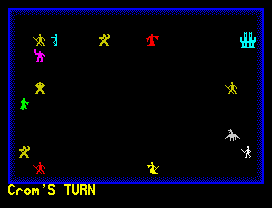
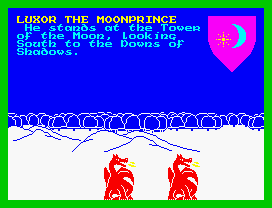
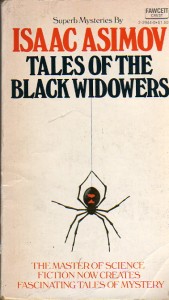
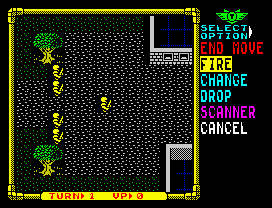
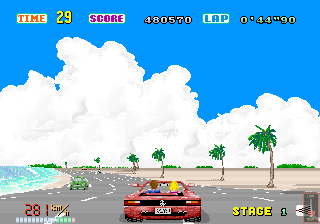
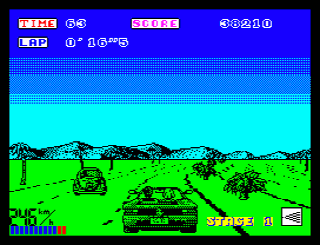
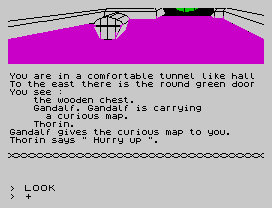


 … announcing the development of a new Lords of Midnight, (initially) for the iPhone and iPad, but eventually for Android and other systems (including PCs), turn-based, with landscaping such as the originals, but with new graphics, better AI, other small adjustments…
… announcing the development of a new Lords of Midnight, (initially) for the iPhone and iPad, but eventually for Android and other systems (including PCs), turn-based, with landscaping such as the originals, but with new graphics, better AI, other small adjustments…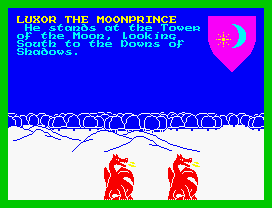
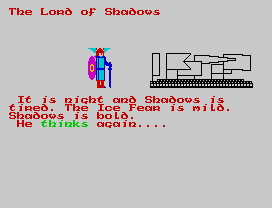
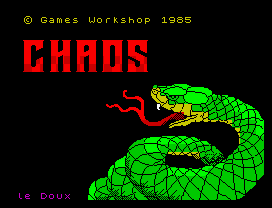 Back to the ol’ Speccy for a 1985 game I and my friends and brother played well into the late 90s: Chaos (also known as Chaos: The Battle of Wizards on the menu screen). Designed and programmed by Julian Gollop, who would go on to design such classics (not that Chaos isn’t one itself) as Laser Squad and UFO: Enemy Unknown (known outside Europe as X-Com: UFO Defense), this was indeed my first contact with a Gollop-designed game, though I didn’t know any of that at the time… after all, I was only an 11-year-old kid.
Back to the ol’ Speccy for a 1985 game I and my friends and brother played well into the late 90s: Chaos (also known as Chaos: The Battle of Wizards on the menu screen). Designed and programmed by Julian Gollop, who would go on to design such classics (not that Chaos isn’t one itself) as Laser Squad and UFO: Enemy Unknown (known outside Europe as X-Com: UFO Defense), this was indeed my first contact with a Gollop-designed game, though I didn’t know any of that at the time… after all, I was only an 11-year-old kid.